How to Make My Screen Small Again on Photoshop
When you lot're working in Photoshop, you're often working with a diverseness of images in different formats and sizes. Therefore, you lot've got to adjust the prototype on your screen to be able to work on it properly. The all-time way to get started is to fit the epitome to your screen or sheet to see what you're working with.
To chop-chop fit an epitome to your screen in Photoshop, go to View > Fit On Screen to fit your entire canvas to your screen. Alternatively, you can printing Command + 0 (Mac) or Control + 0 (Windows) to fit your image to the screen instead.
In this post, yous'll learn the ins and outs of how to fit your prototype to your screen or canvass in Photoshop. You'll also acquire how to trim away transparent pixels with ease and utilise Photoshop's screen modes such as Full Screen similar a pro.
Let's get started!
How To Fit An Paradigm To Your Screen In Photoshop
To get started, load your epitome into Photoshop, then click View in the menu bar and select Fit To Screen from the dropdown menu.


This will adjust the image to your screen, so if it is smaller than the screen, it will enlarge the paradigm and then that it takes up the empty space in your Photoshop workspace.
Here yous see the image in the workspace, withal, at that place's space above and below it.
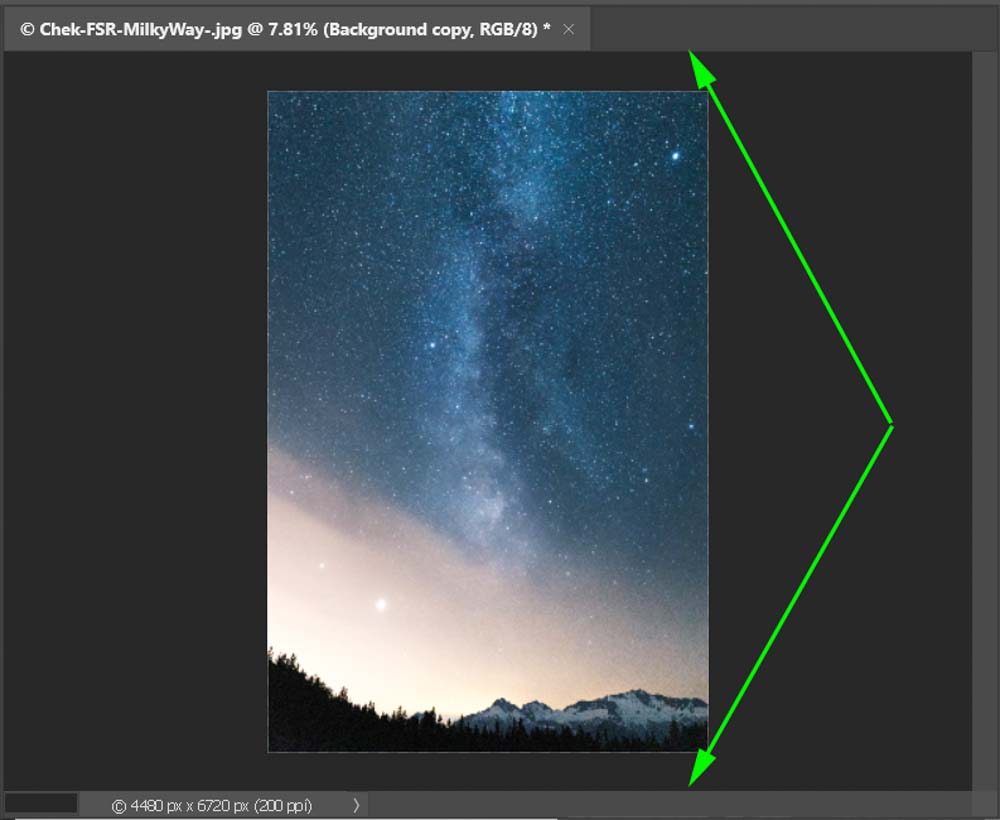
When you use the Fit To Screen option, that empty space is and then filled by the enlarged prototype, similar what yous see beneath.

The Fit Image To Screen Keyboard Shortcut
When you desire to employ the Fit To Screen function in Photoshop, you don't have to use the View option that's plant in the menu bar. You can also utilize the shortcut, Control + 0 on Windows or Command + 0 on Mac.
The shortcut saves fourth dimension and allows you to remain in the zone when y'all're working on any projection in Photoshop.
How To Fit Your Canvas To Your Epitome
Sometimes your canvas is larger than the image you've imported into Photoshop, merely yous don't demand all of that extra infinite. Here's how y'all tin can get rid of that actress space with ease.
Extra space on the canvas is known as transparent pixels considering it has no actual color or image data. It is shown equally a white and gray checkered pattern.
First, click Prototype in the Menu Bar, and from the dropdown menu, select Trim.

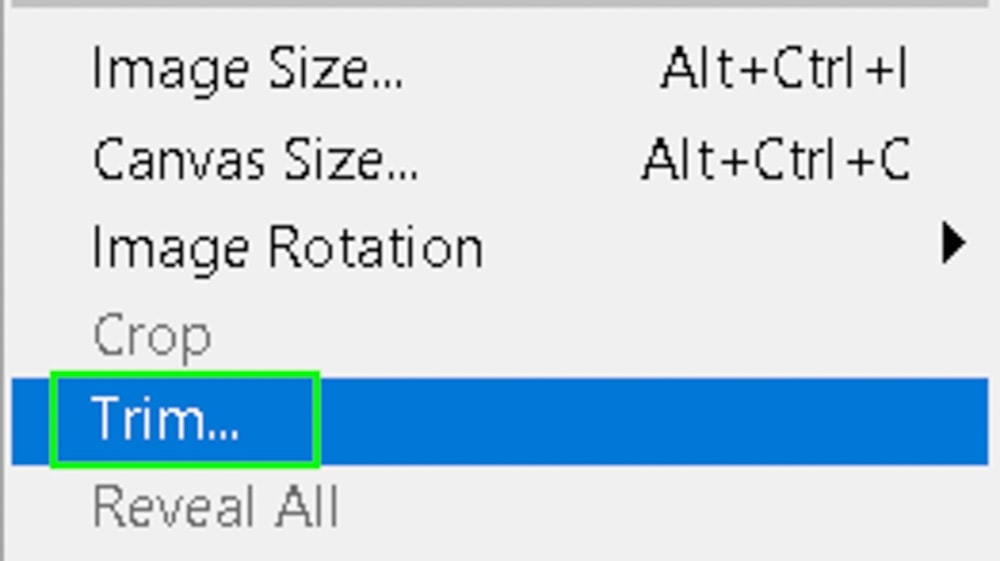
A popup window will appear showing you the settings to trim, it volition automatically have "Transparent Pixels" selected, leave it that fashion. If for some reason, Transparent Pixels is not selected, then select that option.
Information technology volition too have a "Trim Abroad" section where yous will see Top, Lesser, Left, and Right selected, this is to ensure all the transparent pixels surrounding the image are trimmed away.
In one case everything is selected, click OK to remove all the transparent pixels surrounding your image.

Using the Trim option is a dandy way to go rid of transparent pixels without affecting your master epitome or needing to employ the crop tool.
Here's what an image looks like before and after you've used the Trim function to fit your sheet to your prototype.
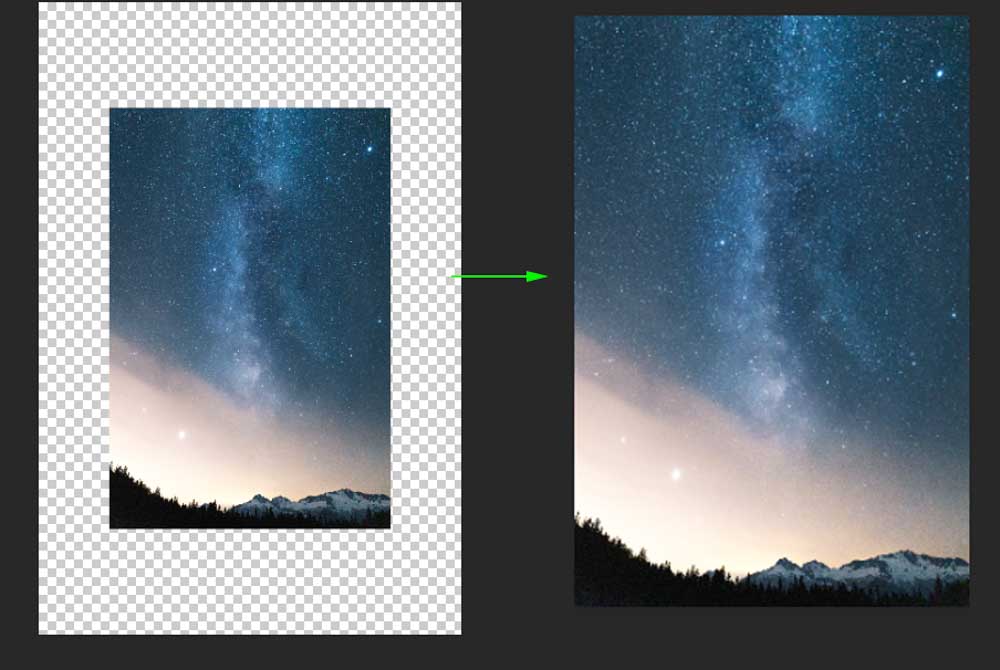
How To Fit An Epitome To Your Screen And Hide Panels
If you prefer working without any distractions, then full-screen mode might be suitable for y'all.
Photoshop has three Screen Modes:
- Standard Screen Mode
- Full-Screen Mode With Card Bar
- Full-Screen Mode
Here's how to admission Photoshop's Screen Modes:
Click View in the Card Bar and from the dropdown bill of fare, hover your mouse over the Screen Mode option.


When you lot hover your mouse over Screen Mode, another menu will announced to its right, listing the three Screen Modes.

The Standard Screen Mode is the default viewing mode for Photoshop. It will look like this:


Full-Screen Style with Carte du jour Bar allows Photoshop to take over your entire screen, with the carte du jour bars bachelor similar this:


Full-Screen Mode past itself allows Photoshop to take over your whole screen without any of the menu confined bachelor. This manner is keen if you adopt working with your whole screen, and you're highly familiar with Photoshop's shortcuts.


While the Menu Bar is a great style to access Photoshop's total-screen mode, it's not the merely style. You can use the F key every bit a shortcut to toggle between the three Screen Modes with ease.
Can You Rescale An Image To Fit Your Canvas Automatically?
When you import an image into Photoshop or transport a new image to your canvas, many times that prototype doesn't fit it. This is because Photoshop doesn't automatically fit your paradigm to the canvas, so yous have to rescale the epitome to fit your canvas.
Here's how to practise it:
- Open up a blank canvas in Photoshop by clicking File in the Menu Bar, then New.

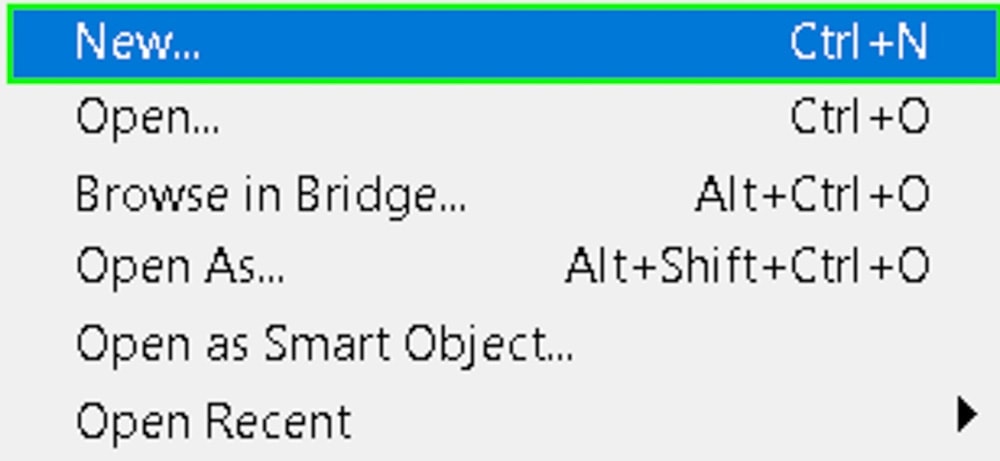
- You'll meet a popup window that has the Default Photoshop Size as a file pick, select it, then click ok.
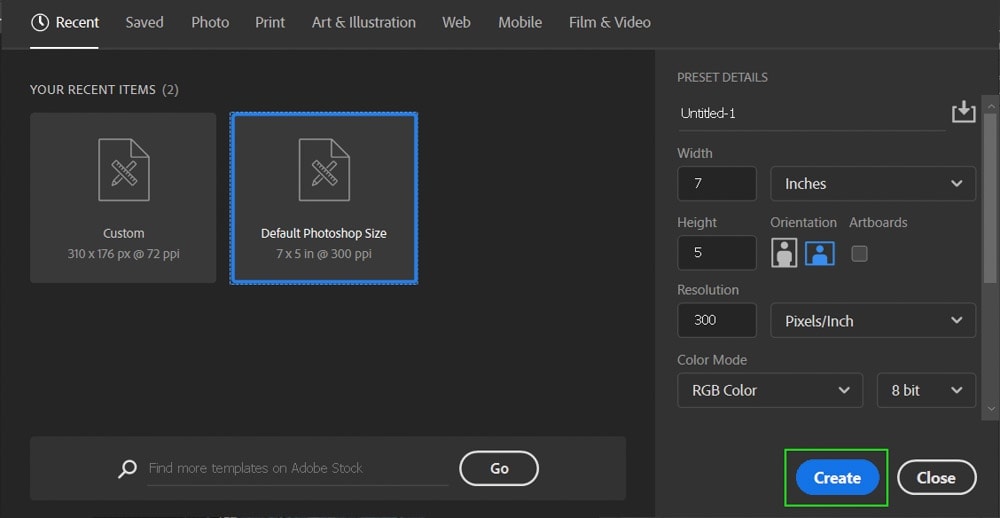
This will create a new blank canvass that volition expect like this:
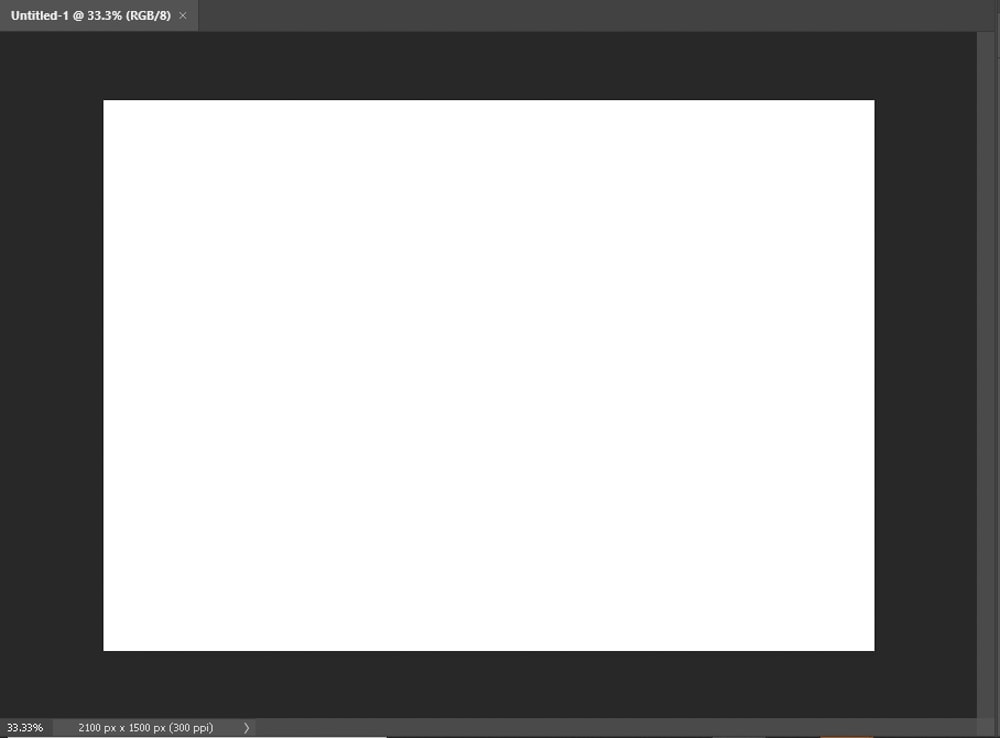
- Next, you lot demand to open up the image you want to fit your sail. Get to the Menu Bar, click File and so open.


- Search for the epitome you desire to open and open information technology in Photoshop.
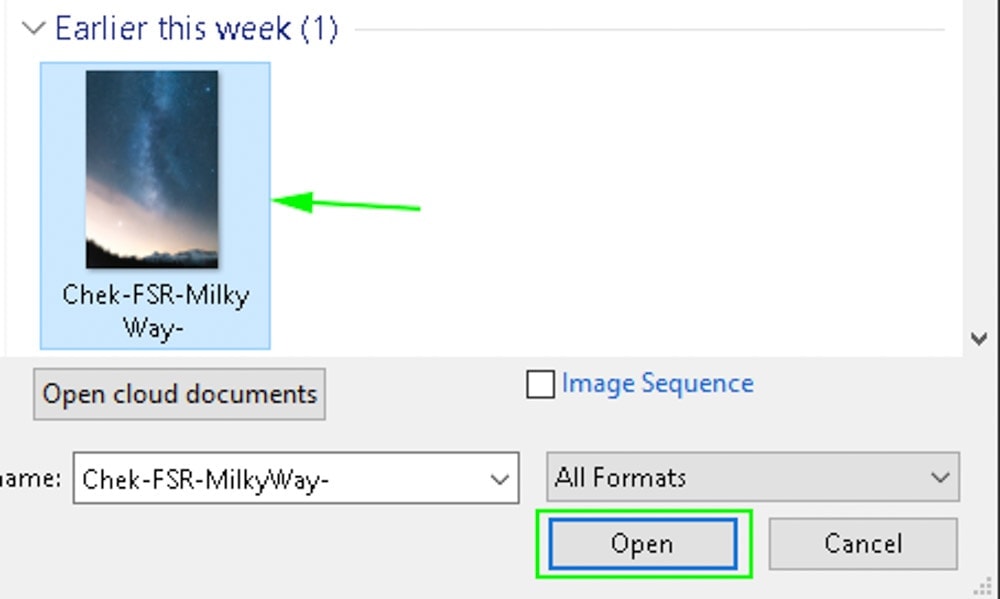
- Get to the new paradigm and select the Motion Tool from the Tool Bar (shortcut – V) and then click on the opened image and drag it to the blank canvas.

Alternatively, you tin besides utilise Control + A followed by Command + C and Control + 5 on Windows or Command + A followed past Command + C and Command + 5 on Mac to copy and paste the new image to the blank canvass.
Now that y'all've loaded the new image onto the blank canvas, you'll see that it's either larger or smaller than the canvas. In this case, the image is larger. But you want information technology to fit the canvas, that's where the Transform Tool volition come in.
This allows you to calibration the image (making it smaller or larger) however yous want.
- Select the layer of the new prototype, then click Edit in the Menu Bar. From the dropdown menu, select Transform, and from the new menu to the correct, select Calibration. Some other shortcut for the Transform tool is Command + T on Windows and Command + T on Mac.

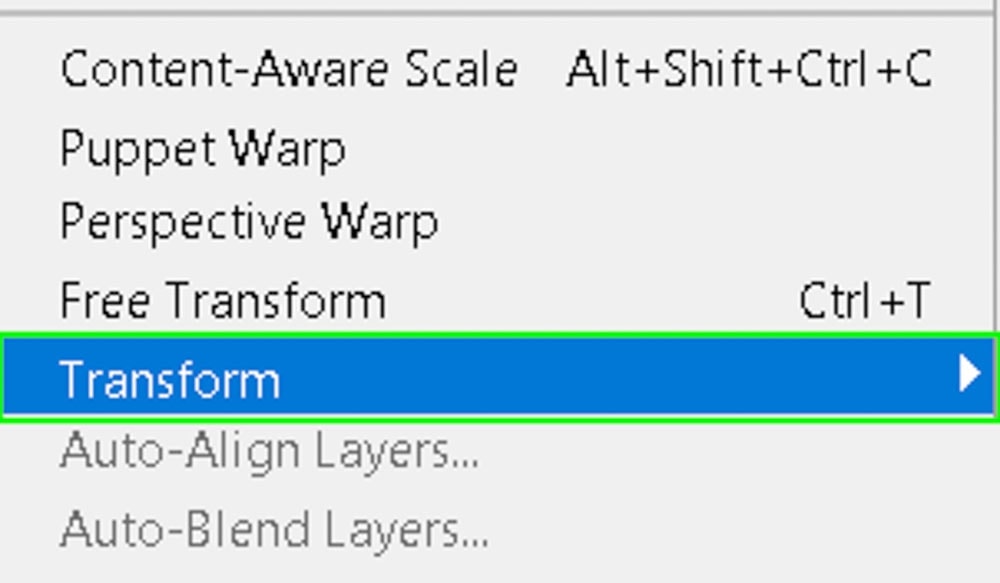
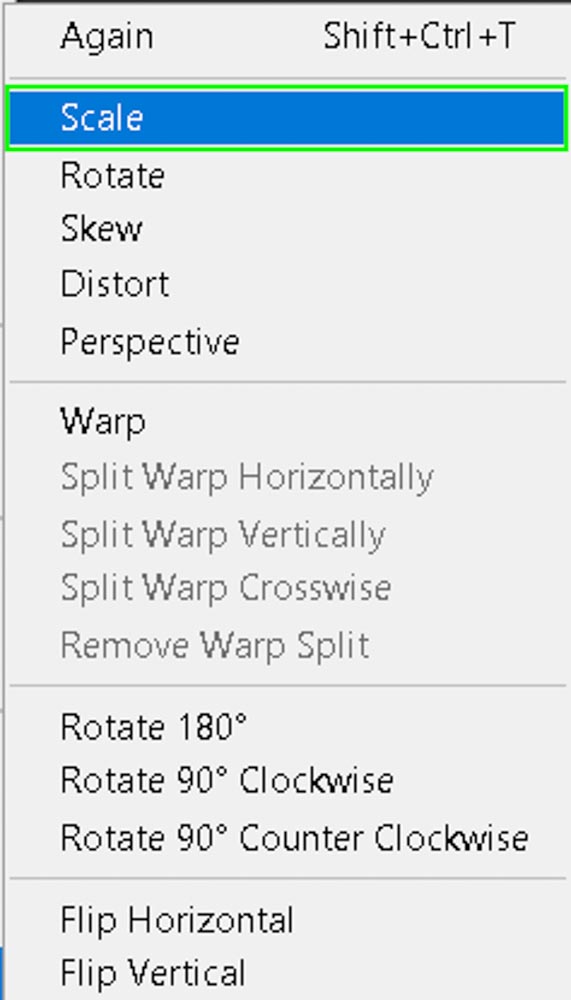
- Zoom out using Command – on Windows or Command – on Mac to view the total size of your epitome, then scale it to fit your sail.

One time you're washed, click on the epitome to complete the transformation and zoom in using Control + or Control + or fit it to the screen using Control/Control + 0.

In this case, the vertical photo does non fit inside a horizontal sheet without significant stretching and distortion. That is why there are white borders left on the outer edges of the image. If yous were scaling to a canvass that fits a like aspect ratio to your existing photograph, you will not have this occur.
How To Embed Your Image To Your Sail
While the Transform Tool is a great way to rescale your images to fit your canvas, it's not the but mode to practice this.
Another method is by using the Place Embedded role in Photoshop to import an paradigm that fits the Height of the sheet (the width would have to be rescaled manually.)
First, start by creating a bare canvas, then clicking File in the Carte du jour Bar and selecting Place Embedded from the dropdown menu.


A popup window will appear where, and so you tin can choose the prototype you want to embed on your sheet. Select the image and so click Place to embed the image onto your canvas.
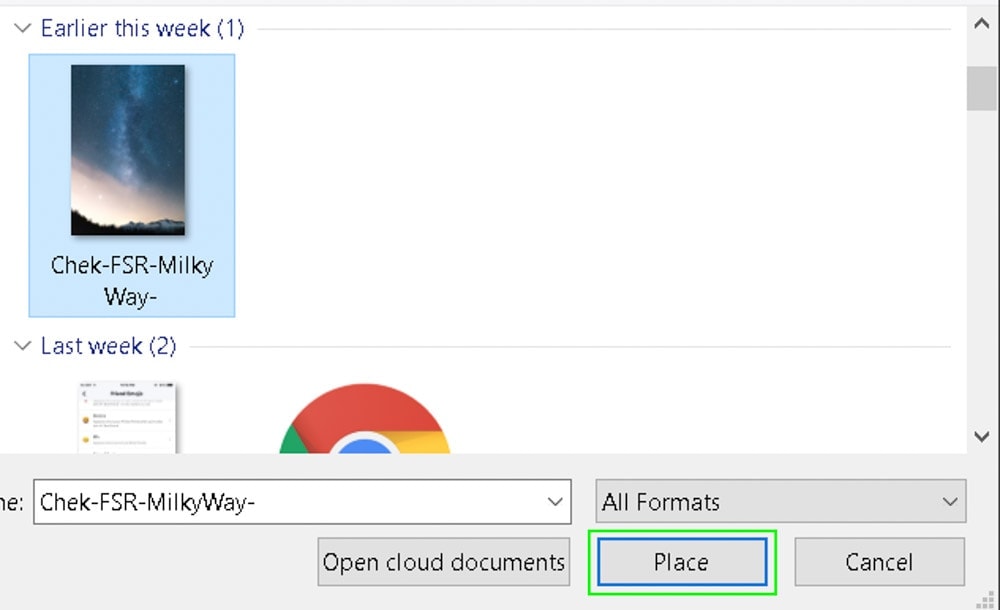
The image will and so exist imported every bit a Smart Object. This means you'll exist able to scale the prototype without losing any of the pixel quality whether you lot enlarge or shrink the image's size.
Here's what the imported image would look like on the sheet:

The imported image will fit the canvas according to its highest dimension, so if it has a portrait orientation (meaning the height is longer than the width, like the one in this tutorial), the superlative will fit the canvas' elevation. Yet, if the image has a landscape orientation (the width is longer than the image's peak) then the width will fit the canvas's width.
As you can see from the screenshot, the imported image is set up to be scaled as soon as it is imported. However, its width and height are linked to maintain its aspect ratio, so you cannot change 1 without the other.
You can unlink them past clicking the link icon between the Westward & H in the Options Bar.

Once you unlink them, you lot tin independently adjust the epitome's pinnacle and width. For this tutorial, the image's width was adapted while the height remained the same.


When you're finished scaling your image and want to utilize it equally a regular layer, you lot can easily rasterize the layer. This will convert the layer data to pixels, converting the smart object into a regular layer.
To rasterize a layer, go to the layer panel and right-click on the smart object, then click Rasterize Layer from the popup menu.


After you've rasterized the layer, yous tin work on it like any other layer.
As you lot've learned, Photoshop allows y'all to fit your paradigm to your screen or sheet in a multifariousness of ways. You tin can fit your canvas to your image with the Trim tool in a few simple clicks, or you can embed an image onto your canvas for easy scaling and editing. These methods volition make your workflow in Photoshop more than seamless than they were earlier.
Happy Editing!
Source: https://www.bwillcreative.com/how-to-fit-an-image-to-your-screen-or-canvas-in-photoshop/
Post a Comment for "How to Make My Screen Small Again on Photoshop"